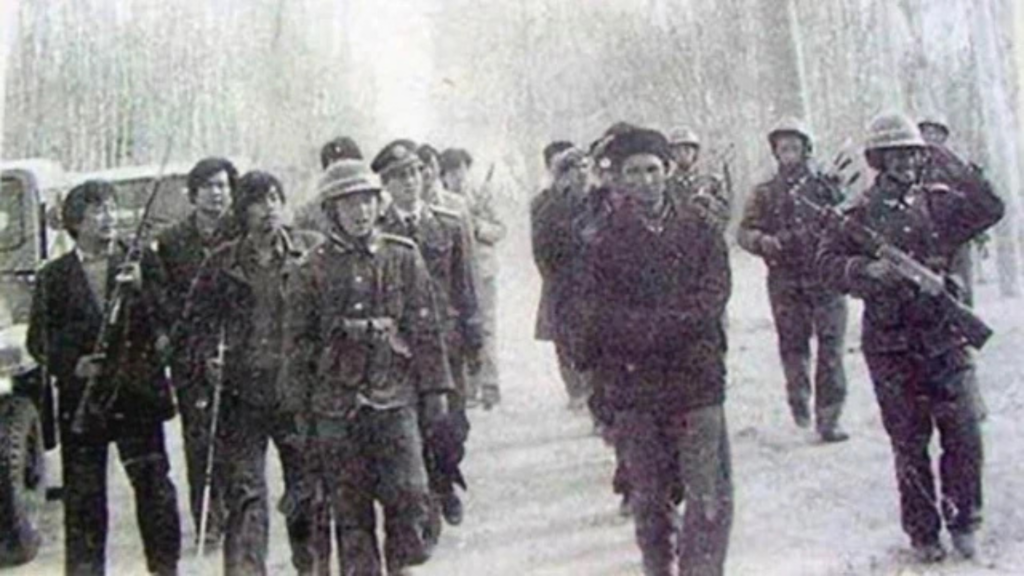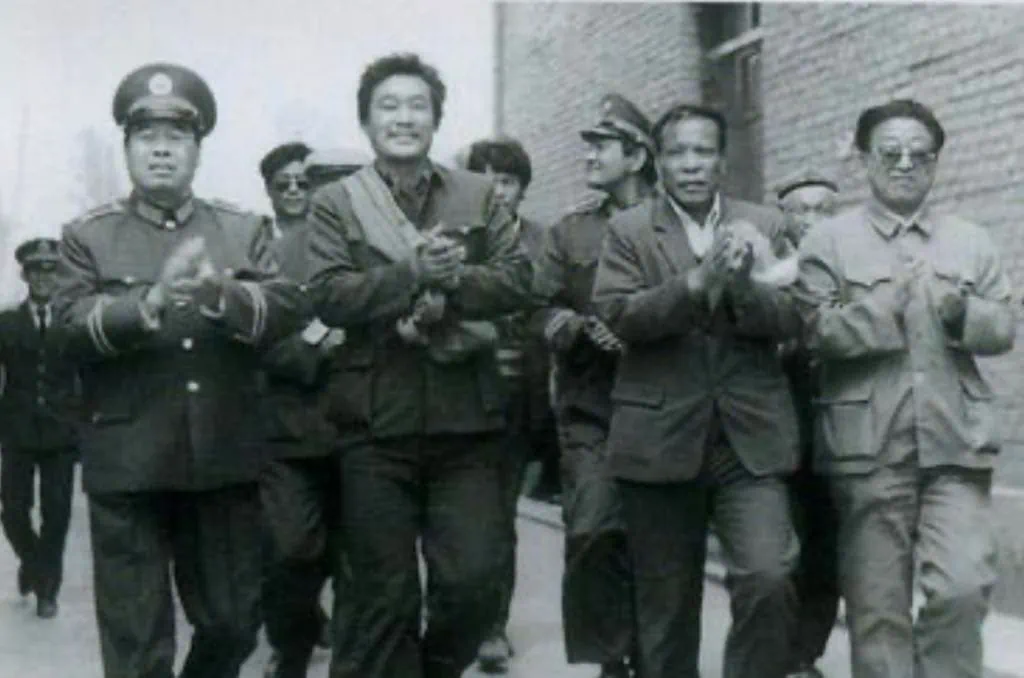UHRP Commemorates 35th Anniversary of the Barin Uprising

April 3, 2025, 3:00 p.m. EST
For Immediate Release
Contact: Henryk Szadziewski (hszad@uhrp.org)
On April 5, 1990, demonstrations in Barin (also written as “Baren”), 26 miles south of Kashgar, became known as the “Barin Uprising.” Although exact numbers are unknown, local sources estimate heavily armed Chinese security forces killed 50 protestors, and detentions were in the hundreds to thousands. Six participants in the events were confirmed to be executed; however, this number could be higher.
At the root of the Barin Uprising was local Uyghurs’ opposition to government policies restricting religious freedoms and women’s reproductive rights. The government response should be understood as a precursor to Chinese government atrocity crimes targeting Uyghurs.
The Barin Uprising April 1990
On April 4, 1990, following weeks of protests against new regulations limiting religious rights, groups of 60 to 200 Uyghur demonstrators gathered in several village mosques in Barin Township to demand religious freedom. Omer Kanat, UHRP Executive Director, adds, “A specific grievance among Uyghurs in Barin was the Chinese government’s refusal to allow the restoration of a mosque. At the time, the government prohibited the construction of new mosques, prompting the local people to seek permission to renovate an old one.”
The next day, state violence broke out as government security forces forcibly dispersed demonstrators, shortly after a peaceful public prayer meeting attended by around 200 protesters near government offices. Amnesty International reported heavily armed security forces, aided by air cover, numbered more than 1,000 and included the Border Defence Force, People’s Armed Police, the People’s Liberation Army, and personnel from the Xinjiang Production and Construction Corps.
Uyghur sources estimated that 50 to “several hundred” protesters were killed, with an undetermined number shot by security forces as they were fleeing police. Human Rights Watch states the exact number of casualties at Barin may never be determined with certainty given the absence of an independent account of the events.
In the absence of unfettered access to Uyghurs in Barin, reports published by Reuters and the Los Angeles Times shortly after the Barin Uprising rely heavily on Chinese government sources. As a result, overseas media accounts focus on a perceived threat to state security from religious extremism. Uyghurs present in the region during the Uprising have understood the denial of women’s reproductive rights as a contributing factor to the events in Barin. UHRP Chinese Outreach Coordinator, Zubayra Shamseden, explains, “the events were also rooted in China’s brutal birth control policies. Uyghur women were forcibly sterilized and subjected to late-term abortions, which the villagers saw as an attempt to erase Uyghur identity and future generations.”
Ms. Shamseden adds that at the time of the Barin Uprising Uyghur women feared state enforced abortions, “China’s harsh birth control policies were ruthless in my hometown, Ghulja. However, local authorities in villages and townships across East Turkistan, accompanied by law enforcement, forcibly collected pregnant women, some in their third trimester, and subjected them to brutal abortions.”
The Aftermath of the Barin Uprising
The suppression of Uyghur resistance to Chinese policies of repression in Barin, Mr. Kanat notes, “marked a turning point for the Uyghur national movement. China ended the relatively tolerant policies of the 1980s on Uyghur religious and cultural activities, and resumed public trials and executions, intensifying repression in the region.”

Chinese Communist Party sources claim more than 200 Uyghurs were detained for their role in the Barin Uprising; however, Amnesty International documented in 1992 hundreds and perhaps thousands of Uyghurs were arrested across the region, with reports of torture in detention. A 1999 Amnesty International report records 27 cases of Uyghurs imprisoned for alleged involvement in the Barin Uprising, such as Ibrahim Ahmed, who was handed a life sentence and jailed in Ürümchi. Jamal Mamat, Abdurehim Turdy, Ahad Tiliwaldy, Turgun Isaak, Sidikhajy Isaak and Abla Kasim were tried in 1990 and 1991 and sentenced to death. However, the exact number of alleged participants in the Barin Uprising who were sentenced to death and executed remains unknown.
The Barin Uprising as a Precursor to Atrocity Crimes
The Barin Uprising is remembered by Uyghurs as a turning point in how the Chinese state responds to Uyghur resistance to repressive policies. Following Barin, the Chinese government has frequently used armed security forces to quell Uyghur protests, including in Ghulja (1997), Ürümchi (2009), Seriqbuya (2013), Hanerik (2013), Alaqagha (2014), and Elishku (2014).
The roots of the protests in Barin and the state violence against Uyghur civilians are a precursor to Chinese government atrocity crimes. As Ms. Shamseden notes, “The killing of Uyghur protestors, along with later events like the 1997 Ghulja Massacre, serves as evidence of China’s intolerance toward Uyghur resistance and its broader policies of repression, including forced sterilizations and mass incarcerations.”
The Uyghur Tribunal concluded in December 2021 that China was responsible for genocide, crimes against humanity, and torture, emphasizing birth control and sterilization as key factors in its determination.
In August 2022, the Office of the United Nations High Commissioner for Human Rights released a report documenting extensive and systematic repression, including arbitrary detention, forced labor, and cultural suppression. The report suggested that China’s treatment of Uyghurs and other Turkic peoples may amount to crimes against humanity and cautioned that conditions remain conducive to ongoing and repeated violations.
In January 2021, the United States determined that China was committing genocide and crimes against humanity against Uyghurs and other Turkic peoples. Since then, legislative bodies in Belgium, Canada, Czechia, the EU, France, Lithuania, the Netherlands, and the UK have also recognized the situation in the Uyghur Region as genocide and/or crimes against humanity.
The US Holocaust Museum’s Simon-Skjodt Center for the Prevention of Genocide released a report in January 2025, finding that “[a]ll of the state policies that have led to accusations of atrocity crimes in the Uyghur Region either continue or are currently expanding.”
This statement was written by UHRP Director of Research Henryk Szadziewski.
